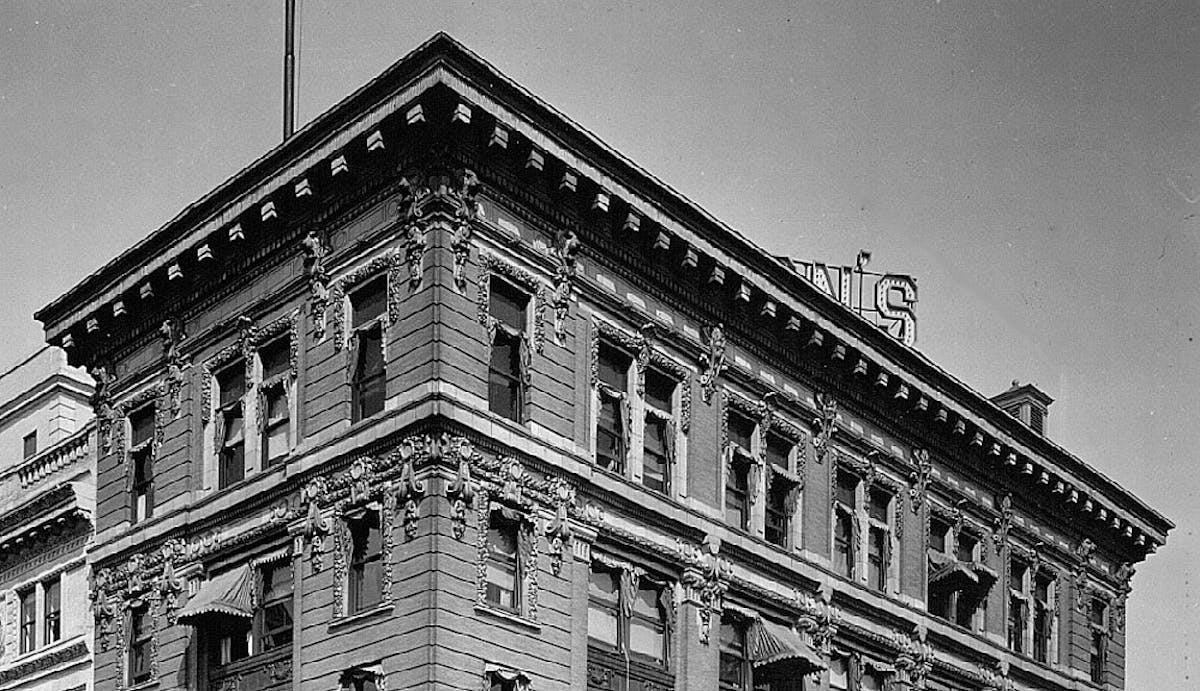You don't know their names, but you do know their buildings.
OK, perhaps that's presumptuous. Maybe you stride into the Foshay Tower and say, "The firm of Magney and Tusler certainly did capture the spirit of the era, eh? From the stark modern exterior to the profusion of organic Art Deco details, you can imagine Scott and Zelda walking down the hall, swaying slightly because they've had a few. Good job, Magney and Tusler!"
But you'd be wrong. Right, but wrong, because no one would know what you're talking about.
Let's back up a bit, 100 years, to be exact. This year is the centenary of the founding of the architectural firm of Magney and Tusler. The men aren't well-known, but their buildings — including the Foshay and the downtown Post Office — define Minneapolis in ways great and small.
Gottfried Magney was an engineer. Born in 1884 in Wisconsin, he got his architecture degree from the University of Minnesota in 1905 and knocked around a few West Coast shops before returning to Minnesota. He had six jobs in 12 years, a restless young man.
Enter Wilbur Tusler from Montana. He was six years younger and less-experienced, but something must have clicked when they got to know each other; the partnership was formed in 1917 and lasted until Magney retired in 1954. (Tusler retired six years later.)
Within five years of getting together, they'd landed the job of designing one of the premier music schools in the Midwest: the MacPhail, at 1128 LaSalle Av. It's a modest building, with quiet confidence; the ground-floor shop windows connect the structure to the street, and it must have presented a lively and inviting sight when the stores were full. Sheet music, tubas, gramophones, the sound of students practicing wafting through the open windows.
They also did houses, a less exciting job, perhaps, but it kept the lights on. And it introduced them to the moneyed class. The later '20s would see three high-profile commissions: the troubled Calhoun Beach Club, which began construction in 1928 but was delayed for almost two decades by the Depression and World War II; the Minneapolis Woman's Club by Loring Park in the same year, and the Foshay Tower, completed in 1929.
While the Beach Club and Woman's Club look backward, the Foshay tower was an exhilarating break with tradition, an embrace of a new style that rejected classical ornamentation and massing. No more Roman columns or Italianate decorations. This was a Machine Age building on the outside, with Parisian modernism on the inside, a stage set for the endless boom to come.
But the crash came, instead. The Depression killed the building market until Uncle Sam threw the company a lifeline in '32, hiring the firm to design the new Post Office by the river.
In a way, it's Foshay's younger, more confident brother: The floral, organic themes of Art Deco were replaced by the geometric simplicity of Streamline Moderne, a romantically futuristic style that would reach its apogee in the 1939 World's Fair.
In two buildings, Magney and Tusler summed up two decades: The Jazz-Age Foshay was high and thin; the Depression-era Post Office was broad and low — but it had the heft of government, the strength of the state.
For these fine buildings, we thank Gottfried and Wilbur. To be specific: We thank them for hiring Leon.
The Foshay and Post Office are really the work of Leon Arnal, a Frenchman who studied at the Ecole des Beaux Arts, the storied institution whose devotion to classical architecture was so influential that the "Beaux Arts Style" has come to mean Roman-style structures slathered with ornamentation. Perhaps he had his interest in the old order knocked out of him in the First World War, where he served with the French army.
Arnal came to Minnesota and ended up teaching in the university's School of Architecture from 1919 until 1948. He also was the chief designer for Magney and Tusler. The Foshay, Post Office and Woman's Club — they're all his.
The firm adapted to the postwar styles with ease, building large and small: The 1952 Armatage school in southwest Minneapolis was a Magney and Tusler project, as was the 1954 Prudential building on Wayzata Boulevard (now the Target Financial Services building on I-394), a crisp piece of corporate architecture.
When the namesakes retired, the firm changed names and ownership and was absorbed into larger companies. Whatever the new owners got when they bought the remnants of the company, we know what they didn't get: the blueprints of Arnal's masterpiece.
The university's Elmer L. Andersen Library has the firm's paperwork — heavy rolls of blueprints you can imagine the architects unfurling to show Wilbur Foshay what his monument would look like. There's a box of promotional drawings showing the lobby, the fountain court and the exterior, complete with long limos and angular abstract Minnesotans.
One poignant drawing shows a "typical businessman's office" with a big desk, modern furniture and a hushed sense of the importance of money. It needs only a televisor and a clock with 10 hours to be a scene from Fritz Lang's "Metropolis."
The illustrations are signed DW — an unnamed illustrator who captured the soul of the building in order to sell it. His anonymity is a reminder of how many people work to make our city what it is, and how little we know about our landmarks. A few might know Magney and Tusler. Fewer still know Arnal. No one knows DW.
But we all know Foshay — who ended up in prison for a pyramid scheme — because he paid for it.
James Lileks • 612-673-7858• @Lileks

This retired journalist changed professional wrestling from Mankato

All-Metro Sports Awards: Here are the 2023 winners

